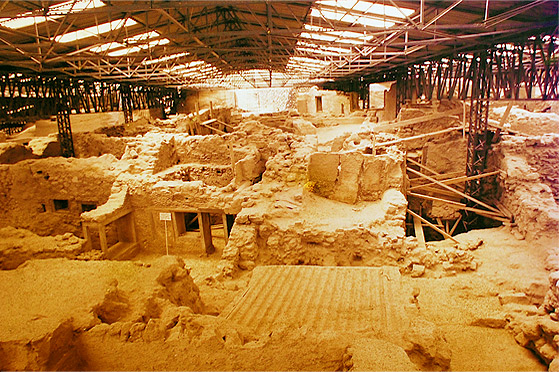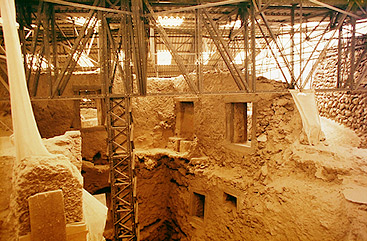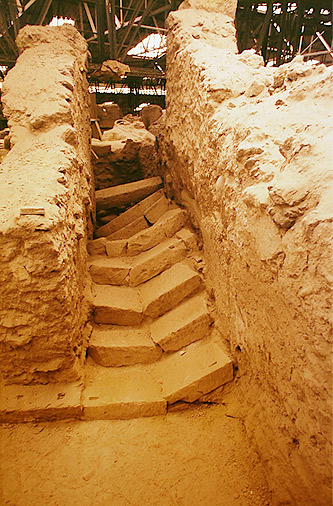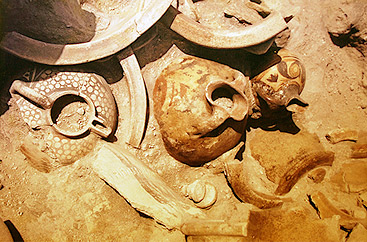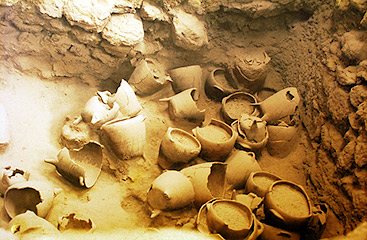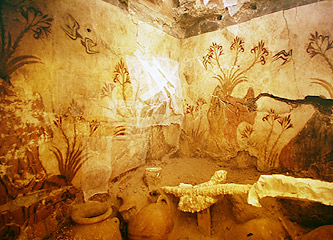Santorini Island: Akrotiri
The first traces of a prehistoric settlement came to light in 1867, in Therasia, when extracting earth for using it in the construction of the Suez Canal. The excavations carried on near Akrotiri, in 1870 by the French Archaeological School and in 1900 by the German Hiller von Gaertringen in the regions of Favatas and Potamos respectively. However, the most serious excavations started in 1967 and were conducted by the archaeologist Spyridon Marinatos who wanted to prove that the Minoan Civilization collapsed as a result of the eruption of the Thera volcano. He chose Akrotiri for a series of reasons: it was located in a plain, thus it could be sustained through agriculture, it was protected from north winds, thus it provided safe anchorage and it was opposite to Crete, thus trade relations could have been developed.
Marinatos did not prove his theory, but he brought to light an amazing prehistoric civilization that flourished in Thera and mainly at Akrotiri from the end of 18th century BC till the volcanic eruption in 17th century BC.
It seems that the island has been dwelled from at least the mid-5th millennium BC. The first colonists must have been from the Lelegian tribe. They founded several settlements, Akrotiri being the most important among them. During the 3rd millennium BC, Akrotiri turned gradually from a fishing village to a considerable coastal settlement. At the beginning of 2nd millennium BC, it had grown into a proto-urban center with a busy commercial harbour. In the 17th century BC, it was damaged by an earthquake but it was rebuilt, became one of the largest ports in the Aegean and thrived, until it was destroyed by the volcanic explosion.
Though only 3% of prehistoric Akrotiri has been investigated, it seems that this area coincides with the city center. The finds were excellently preserved, due to the pumice that had them buried and protected - actually, Akrotiri has been recorded as the prehistoric Pompeii of the Aegean. From the finds, researchers have concluded that prehistoric Thera was an organized, complex, cosmopolitan urban society that could satisfy the needs of the locals and, at the same time, export commodities to other societies as well. It was a consumerist society that displayed its prosperity and its tendency to luxury through the colorful wall paintings and the rich and varied items, some of which were imported. Though it was influenced by Minoan Crete, it maintained some characteristic features that distinguish it.
The settlement of Akrotiri had two or three-storey edifices, densely built on narrow, paved streets. The floors were from tamped earth and were sometimes paved or with seashell or pebble mosaics. The most luxurious buildings were made by fitted stones (xestes), the rest of them by mud mixed with straw. The floors communicated with interior stone or wooden staircases. The ground floors were used as storerooms, mills or workshops and the upper ones as residences - it seems that each house was equipped in order to sustain its inhabitants. The rooms were constructed according to their function: large windows where light was necessary (e.g. workshops), small windows in the food-storage rooms for better preservation. A sewerage network was linked directly to their sanitary facilities. There was also a drainage system.
Therans were farmers, herdsmen, fishermen. They stabled the animals outside the city, they used writing and metrical systems, the labor was divided and the craftsmen were specialized in various domains. They had developed trade relations with Eastern Mediterranean and exported mainly olive oil and cloth.
It seems that the wealth was not concentrated in just one person. Probably, it was the priestly class that governed and controlled, as no palace has been discovered. However, no temples were found, so it is possible that worship was exercised privately. It is believed that they worshipped nature and fertility, as is the case in Crete. It seems that women embellished themselves. In the wall paintings, they are depicted with make up, intricate gold or silver jewellery and often bare-breasted. One of their main occupations must have been weaving, as it is documented by the looms that were found in several buildings.
The eruption of the volcano brought all this to an abrupt end; however, it seems that Therans were somehow warned and abandoned the city before the disaster: no skeletons and no valuables have been found until today.
|
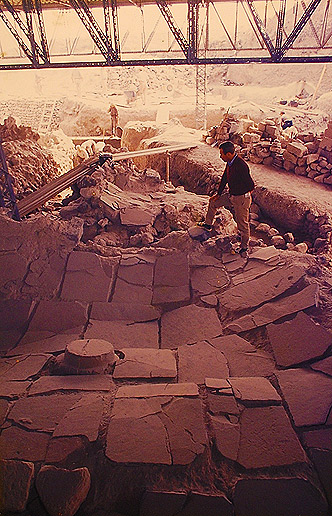
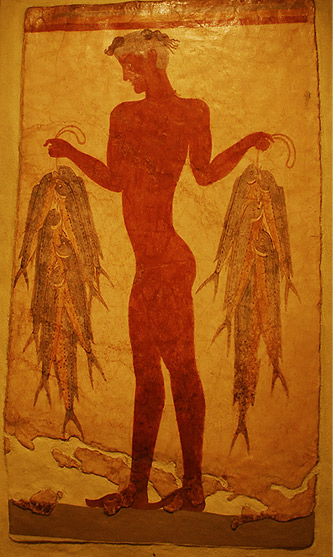
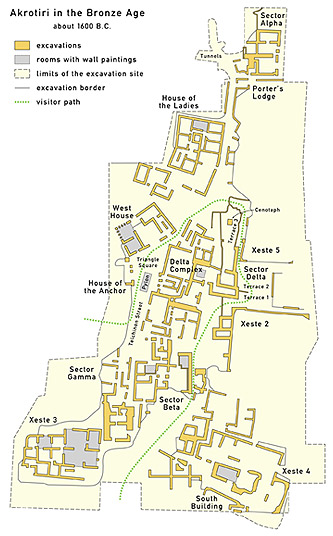
|
